Radio Frequency Identification
Automatic Number Plate Recognition
Smartphone Applications
Contactless Payment Systems
On-Board Units
Back Office Systems
Roadside Equipment
Payment Processing Solutions
Highway Tolling
Urban Tolling
Congestion Pricing
Government
Private Operators
Transport Authorities
North America
Europe
South America
Asia Pacific
Middle East and Africa
North America Outlook (USD Billion, 2019-2035)
North America Electronic Toll Collection Market by Technology Type
Radio Frequency Identification
Automatic Number Plate Recognition
Smartphone Applications
Contactless Payment Systems
North America Electronic Toll Collection Market by Component Type
On-Board Units
Back Office Systems
Roadside Equipment
Payment Processing Solutions
North America Electronic Toll Collection Market by Application Type
Highway Tolling
Urban Tolling
Congestion Pricing
North America Electronic Toll Collection Market by End Use Type
Government
Private Operators
Transport Authorities
North America Electronic Toll Collection Market by Regional Type
US
Canada
US Outlook (USD Billion, 2019-2035)
US Electronic Toll Collection Market by Technology Type
Radio Frequency Identification
Automatic Number Plate Recognition
Smartphone Applications
Contactless Payment Systems
US Electronic Toll Collection Market by Component Type
On-Board Units
Back Office Systems
Roadside Equipment
Payment Processing Solutions
US Electronic Toll Collection Market by Application Type
Highway Tolling
Urban Tolling
Congestion Pricing
US Electronic Toll Collection Market by End Use Type
Government
Private Operators
Transport Authorities
CANADA Outlook (USD Billion, 2019-2035)
CANADA Electronic Toll Collection Market by Technology Type
Radio Frequency Identification
Automatic Number Plate Recognition
Smartphone Applications
Contactless Payment Systems
CANADA Electronic Toll Collection Market by Component Type
On-Board Units
Back Office Systems
Roadside Equipment
Payment Processing Solutions
CANADA Electronic Toll Collection Market by Application Type
Highway Tolling
Urban Tolling
Congestion Pricing
CANADA Electronic Toll Collection Market by End Use Type
Government
Private Operators
Transport Authorities
Europe Outlook (USD Billion, 2019-2035)
Europe Electronic Toll Collection Market by Technology Type
Radio Frequency Identification
Automatic Number Plate Recognition
Smartphone Applications
Contactless Payment Systems
Europe Electronic Toll Collection Market by Component Type
On-Board Units
Back Office Systems
Roadside Equipment
Payment Processing Solutions
Europe Electronic Toll Collection Market by Application Type
Highway Tolling
Urban Tolling
Congestion Pricing
Europe Electronic Toll Collection Market by End Use Type
Government
Private Operators
Transport Authorities
Europe Electronic Toll Collection Market by Regional Type
Germany
UK
France
Russia
Italy
Spain
Rest of Europe
GERMANY Outlook (USD Billion, 2019-2035)
GERMANY Electronic Toll Collection Market by Technology Type
Radio Frequency Identification
Automatic Number Plate Recognition
Smartphone Applications
Contactless Payment Systems
GERMANY Electronic Toll Collection Market by Component Type
On-Board Units
Back Office Systems
Roadside Equipment
Payment Processing Solutions
GERMANY Electronic Toll Collection Market by Application Type
Highway Tolling
Urban Tolling
Congestion Pricing
GERMANY Electronic Toll Collection Market by End Use Type
Government
Private Operators
Transport Authorities
UK Outlook (USD Billion, 2019-2035)
UK Electronic Toll Collection Market by Technology Type
Radio Frequency Identification
Automatic Number Plate Recognition
Smartphone Applications
Contactless Payment Systems
UK Electronic Toll Collection Market by Component Type
On-Board Units
Back Office Systems
Roadside Equipment
Payment Processing Solutions
UK Electronic Toll Collection Market by Application Type
Highway Tolling
Urban Tolling
Congestion Pricing
UK Electronic Toll Collection Market by End Use Type
Government
Private Operators
Transport Authorities
FRANCE Outlook (USD Billion, 2019-2035)
FRANCE Electronic Toll Collection Market by Technology Type
Radio Frequency Identification
Automatic Number Plate Recognition
Smartphone Applications
Contactless Payment Systems
FRANCE Electronic Toll Collection Market by Component Type
On-Board Units
Back Office Systems
Roadside Equipment
Payment Processing Solutions
FRANCE Electronic Toll Collection Market by Application Type
Highway Tolling
Urban Tolling
Congestion Pricing
FRANCE Electronic Toll Collection Market by End Use Type
Government
Private Operators
Transport Authorities
RUSSIA Outlook (USD Billion, 2019-2035)
RUSSIA Electronic Toll Collection Market by Technology Type
Radio Frequency Identification
Automatic Number Plate Recognition
Smartphone Applications
Contactless Payment Systems
RUSSIA Electronic Toll Collection Market by Component Type
On-Board Units
Back Office Systems
Roadside Equipment
Payment Processing Solutions
RUSSIA Electronic Toll Collection Market by Application Type
Highway Tolling
Urban Tolling
Congestion Pricing
RUSSIA Electronic Toll Collection Market by End Use Type
Government
Private Operators
Transport Authorities
ITALY Outlook (USD Billion, 2019-2035)
ITALY Electronic Toll Collection Market by Technology Type
Radio Frequency Identification
Automatic Number Plate Recognition
Smartphone Applications
Contactless Payment Systems
ITALY Electronic Toll Collection Market by Component Type
On-Board Units
Back Office Systems
Roadside Equipment
Payment Processing Solutions
ITALY Electronic Toll Collection Market by Application Type
Highway Tolling
Urban Tolling
Congestion Pricing
ITALY Electronic Toll Collection Market by End Use Type
Government
Private Operators
Transport Authorities
SPAIN Outlook (USD Billion, 2019-2035)
SPAIN Electronic Toll Collection Market by Technology Type
Radio Frequency Identification
Automatic Number Plate Recognition
Smartphone Applications
Contactless Payment Systems
SPAIN Electronic Toll Collection Market by Component Type
On-Board Units
Back Office Systems
Roadside Equipment
Payment Processing Solutions
SPAIN Electronic Toll Collection Market by Application Type
Highway Tolling
Urban Tolling
Congestion Pricing
SPAIN Electronic Toll Collection Market by End Use Type
Government
Private Operators
Transport Authorities
REST OF EUROPE Outlook (USD Billion, 2019-2035)
REST OF EUROPE Electronic Toll Collection Market by Technology Type
Radio Frequency Identification
Automatic Number Plate Recognition
Smartphone Applications
Contactless Payment Systems
REST OF EUROPE Electronic Toll Collection Market by Component Type
On-Board Units
Back Office Systems
Roadside Equipment
Payment Processing Solutions
REST OF EUROPE Electronic Toll Collection Market by Application Type
Highway Tolling
Urban Tolling
Congestion Pricing
REST OF EUROPE Electronic Toll Collection Market by End Use Type
Government
Private Operators
Transport Authorities
APAC Outlook (USD Billion, 2019-2035)
APAC Electronic Toll Collection Market by Technology Type
Radio Frequency Identification
Automatic Number Plate Recognition
Smartphone Applications
Contactless Payment Systems
APAC Electronic Toll Collection Market by Component Type
On-Board Units
Back Office Systems
Roadside Equipment
Payment Processing Solutions
APAC Electronic Toll Collection Market by Application Type
Highway Tolling
Urban Tolling
Congestion Pricing
APAC Electronic Toll Collection Market by End Use Type
Government
Private Operators
Transport Authorities
APAC Electronic Toll Collection Market by Regional Type
China
India
Japan
South Korea
Malaysia
Thailand
Indonesia
Rest of APAC
CHINA Outlook (USD Billion, 2019-2035)
CHINA Electronic Toll Collection Market by Technology Type
Radio Frequency Identification
Automatic Number Plate Recognition
Smartphone Applications
Contactless Payment Systems
CHINA Electronic Toll Collection Market by Component Type
On-Board Units
Back Office Systems
Roadside Equipment
Payment Processing Solutions
CHINA Electronic Toll Collection Market by Application Type
Highway Tolling
Urban Tolling
Congestion Pricing
CHINA Electronic Toll Collection Market by End Use Type
Government
Private Operators
Transport Authorities
INDIA Outlook (USD Billion, 2019-2035)
INDIA Electronic Toll Collection Market by Technology Type
Radio Frequency Identification
Automatic Number Plate Recognition
Smartphone Applications
Contactless Payment Systems
INDIA Electronic Toll Collection Market by Component Type
On-Board Units
Back Office Systems
Roadside Equipment
Payment Processing Solutions
INDIA Electronic Toll Collection Market by Application Type
Highway Tolling
Urban Tolling
Congestion Pricing
INDIA Electronic Toll Collection Market by End Use Type
Government
Private Operators
Transport Authorities
JAPAN Outlook (USD Billion, 2019-2035)
JAPAN Electronic Toll Collection Market by Technology Type
Radio Frequency Identification
Automatic Number Plate Recognition
Smartphone Applications
Contactless Payment Systems
JAPAN Electronic Toll Collection Market by Component Type
On-Board Units
Back Office Systems
Roadside Equipment
Payment Processing Solutions
JAPAN Electronic Toll Collection Market by Application Type
Highway Tolling
Urban Tolling
Congestion Pricing
JAPAN Electronic Toll Collection Market by End Use Type
Government
Private Operators
Transport Authorities
SOUTH KOREA Outlook (USD Billion, 2019-2035)
SOUTH KOREA Electronic Toll Collection Market by Technology Type
Radio Frequency Identification
Automatic Number Plate Recognition
Smartphone Applications
Contactless Payment Systems
SOUTH KOREA Electronic Toll Collection Market by Component Type
On-Board Units
Back Office Systems
Roadside Equipment
Payment Processing Solutions
SOUTH KOREA Electronic Toll Collection Market by Application Type
Highway Tolling
Urban Tolling
Congestion Pricing
SOUTH KOREA Electronic Toll Collection Market by End Use Type
Government
Private Operators
Transport Authorities
MALAYSIA Outlook (USD Billion, 2019-2035)
MALAYSIA Electronic Toll Collection Market by Technology Type
Radio Frequency Identification
Automatic Number Plate Recognition
Smartphone Applications
Contactless Payment Systems
MALAYSIA Electronic Toll Collection Market by Component Type
On-Board Units
Back Office Systems
Roadside Equipment
Payment Processing Solutions
MALAYSIA Electronic Toll Collection Market by Application Type
Highway Tolling
Urban Tolling
Congestion Pricing
MALAYSIA Electronic Toll Collection Market by End Use Type
Government
Private Operators
Transport Authorities
THAILAND Outlook (USD Billion, 2019-2035)
THAILAND Electronic Toll Collection Market by Technology Type
Radio Frequency Identification
Automatic Number Plate Recognition
Smartphone Applications
Contactless Payment Systems
THAILAND Electronic Toll Collection Market by Component Type
On-Board Units
Back Office Systems
Roadside Equipment
Payment Processing Solutions
THAILAND Electronic Toll Collection Market by Application Type
Highway Tolling
Urban Tolling
Congestion Pricing
THAILAND Electronic Toll Collection Market by End Use Type
Government
Private Operators
Transport Authorities
INDONESIA Outlook (USD Billion, 2019-2035)
INDONESIA Electronic Toll Collection Market by Technology Type
Radio Frequency Identification
Automatic Number Plate Recognition
Smartphone Applications
Contactless Payment Systems
INDONESIA Electronic Toll Collection Market by Component Type
On-Board Units
Back Office Systems
Roadside Equipment
Payment Processing Solutions
INDONESIA Electronic Toll Collection Market by Application Type
Highway Tolling
Urban Tolling
Congestion Pricing
INDONESIA Electronic Toll Collection Market by End Use Type
Government
Private Operators
Transport Authorities
REST OF APAC Outlook (USD Billion, 2019-2035)
REST OF APAC Electronic Toll Collection Market by Technology Type
Radio Frequency Identification
Automatic Number Plate Recognition
Smartphone Applications
Contactless Payment Systems
REST OF APAC Electronic Toll Collection Market by Component Type
On-Board Units
Back Office Systems
Roadside Equipment
Payment Processing Solutions
REST OF APAC Electronic Toll Collection Market by Application Type
Highway Tolling
Urban Tolling
Congestion Pricing
REST OF APAC Electronic Toll Collection Market by End Use Type
Government
Private Operators
Transport Authorities
South America Outlook (USD Billion, 2019-2035)
South America Electronic Toll Collection Market by Technology Type
Radio Frequency Identification
Automatic Number Plate Recognition
Smartphone Applications
Contactless Payment Systems
South America Electronic Toll Collection Market by Component Type
On-Board Units
Back Office Systems
Roadside Equipment
Payment Processing Solutions
South America Electronic Toll Collection Market by Application Type
Highway Tolling
Urban Tolling
Congestion Pricing
South America Electronic Toll Collection Market by End Use Type
Government
Private Operators
Transport Authorities
South America Electronic Toll Collection Market by Regional Type
Brazil
Mexico
Argentina
Rest of South America
BRAZIL Outlook (USD Billion, 2019-2035)
BRAZIL Electronic Toll Collection Market by Technology Type
Radio Frequency Identification
Automatic Number Plate Recognition
Smartphone Applications
Contactless Payment Systems
BRAZIL Electronic Toll Collection Market by Component Type
On-Board Units
Back Office Systems
Roadside Equipment
Payment Processing Solutions
BRAZIL Electronic Toll Collection Market by Application Type
Highway Tolling
Urban Tolling
Congestion Pricing
BRAZIL Electronic Toll Collection Market by End Use Type
Government
Private Operators
Transport Authorities
MEXICO Outlook (USD Billion, 2019-2035)
MEXICO Electronic Toll Collection Market by Technology Type
Radio Frequency Identification
Automatic Number Plate Recognition
Smartphone Applications
Contactless Payment Systems
MEXICO Electronic Toll Collection Market by Component Type
On-Board Units
Back Office Systems
Roadside Equipment
Payment Processing Solutions
MEXICO Electronic Toll Collection Market by Application Type
Highway Tolling
Urban Tolling
Congestion Pricing
MEXICO Electronic Toll Collection Market by End Use Type
Government
Private Operators
Transport Authorities
ARGENTINA Outlook (USD Billion, 2019-2035)
ARGENTINA Electronic Toll Collection Market by Technology Type
Radio Frequency Identification
Automatic Number Plate Recognition
Smartphone Applications
Contactless Payment Systems
ARGENTINA Electronic Toll Collection Market by Component Type
On-Board Units
Back Office Systems
Roadside Equipment
Payment Processing Solutions
ARGENTINA Electronic Toll Collection Market by Application Type
Highway Tolling
Urban Tolling
Congestion Pricing
ARGENTINA Electronic Toll Collection Market by End Use Type
Government
Private Operators
Transport Authorities
REST OF SOUTH AMERICA Outlook (USD Billion, 2019-2035)
REST OF SOUTH AMERICA Electronic Toll Collection Market by Technology Type
Radio Frequency Identification
Automatic Number Plate Recognition
Smartphone Applications
Contactless Payment Systems
REST OF SOUTH AMERICA Electronic Toll Collection Market by Component Type
On-Board Units
Back Office Systems
Roadside Equipment
Payment Processing Solutions
REST OF SOUTH AMERICA Electronic Toll Collection Market by Application Type
Highway Tolling
Urban Tolling
Congestion Pricing
REST OF SOUTH AMERICA Electronic Toll Collection Market by End Use Type
Government
Private Operators
Transport Authorities
MEA Outlook (USD Billion, 2019-2035)
MEA Electronic Toll Collection Market by Technology Type
Radio Frequency Identification
Automatic Number Plate Recognition
Smartphone Applications
Contactless Payment Systems
MEA Electronic Toll Collection Market by Component Type
On-Board Units
Back Office Systems
Roadside Equipment
Payment Processing Solutions
MEA Electronic Toll Collection Market by Application Type
Highway Tolling
Urban Tolling
Congestion Pricing
MEA Electronic Toll Collection Market by End Use Type
Government
Private Operators
Transport Authorities
MEA Electronic Toll Collection Market by Regional Type
GCC Countries
South Africa
Rest of MEA
GCC COUNTRIES Outlook (USD Billion, 2019-2035)
GCC COUNTRIES Electronic Toll Collection Market by Technology Type
Radio Frequency Identification
Automatic Number Plate Recognition
Smartphone Applications
Contactless Payment Systems
GCC COUNTRIES Electronic Toll Collection Market by Component Type
On-Board Units
Back Office Systems
Roadside Equipment
Payment Processing Solutions
GCC COUNTRIES Electronic Toll Collection Market by Application Type
Highway Tolling
Urban Tolling
Congestion Pricing
GCC COUNTRIES Electronic Toll Collection Market by End Use Type
Government
Private Operators
Transport Authorities
SOUTH AFRICA Outlook (USD Billion, 2019-2035)
SOUTH AFRICA Electronic Toll Collection Market by Technology Type
Radio Frequency Identification
Automatic Number Plate Recognition
Smartphone Applications
Contactless Payment Systems
SOUTH AFRICA Electronic Toll Collection Market by Component Type
On-Board Units
Back Office Systems
Roadside Equipment
Payment Processing Solutions
SOUTH AFRICA Electronic Toll Collection Market by Application Type
Highway Tolling
Urban Tolling
Congestion Pricing
SOUTH AFRICA Electronic Toll Collection Market by End Use Type
Government
Private Operators
Transport Authorities
REST OF MEA Outlook (USD Billion, 2019-2035)
REST OF MEA Electronic Toll Collection Market by Technology Type
Radio Frequency Identification
Automatic Number Plate Recognition
Smartphone Applications
Contactless Payment Systems
REST OF MEA Electronic Toll Collection Market by Component Type
On-Board Units
Back Office Systems
Roadside Equipment
Payment Processing Solutions
REST OF MEA Electronic Toll Collection Market by Application Type
Highway Tolling
Urban Tolling
Congestion Pricing
REST OF MEA Electronic Toll Collection Market by End Use Type
Government
Private Operators
Transport Authorities
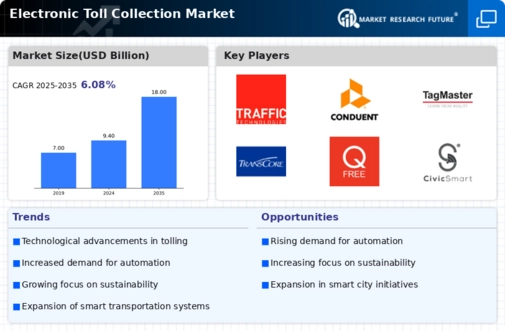
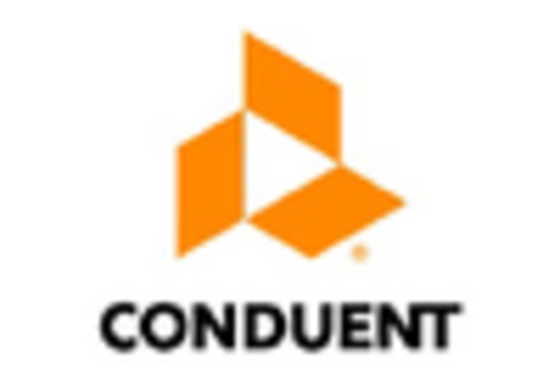
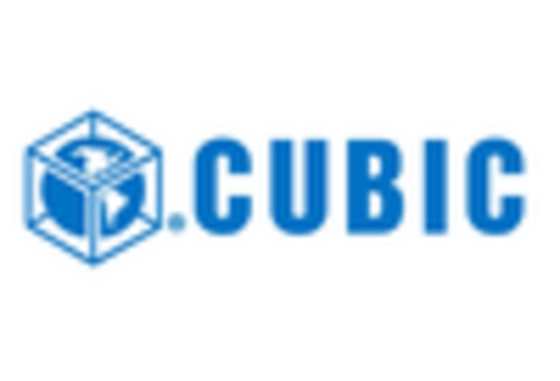
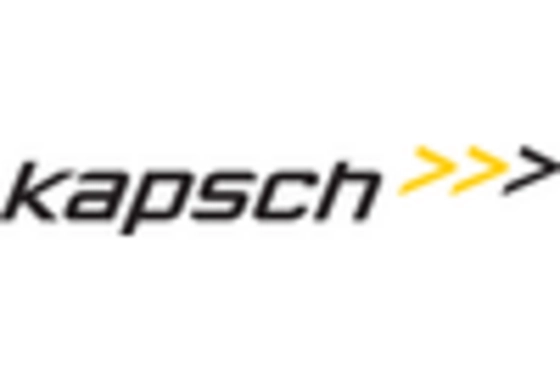
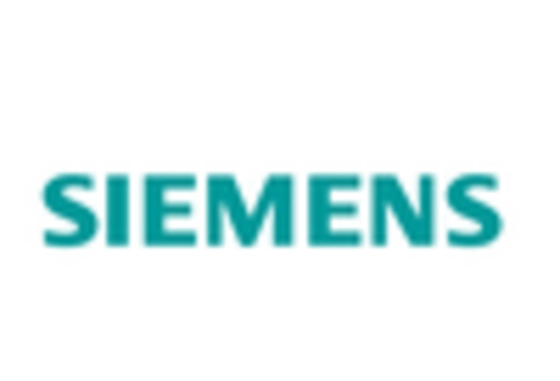

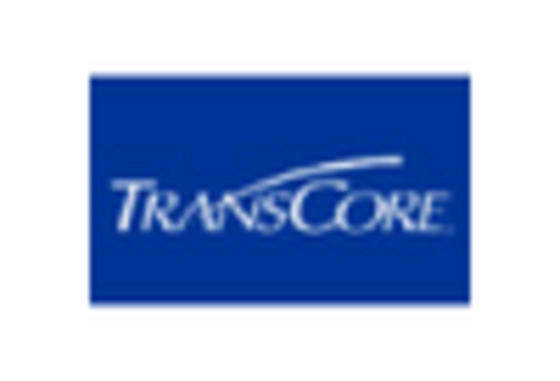

Leave a Comment